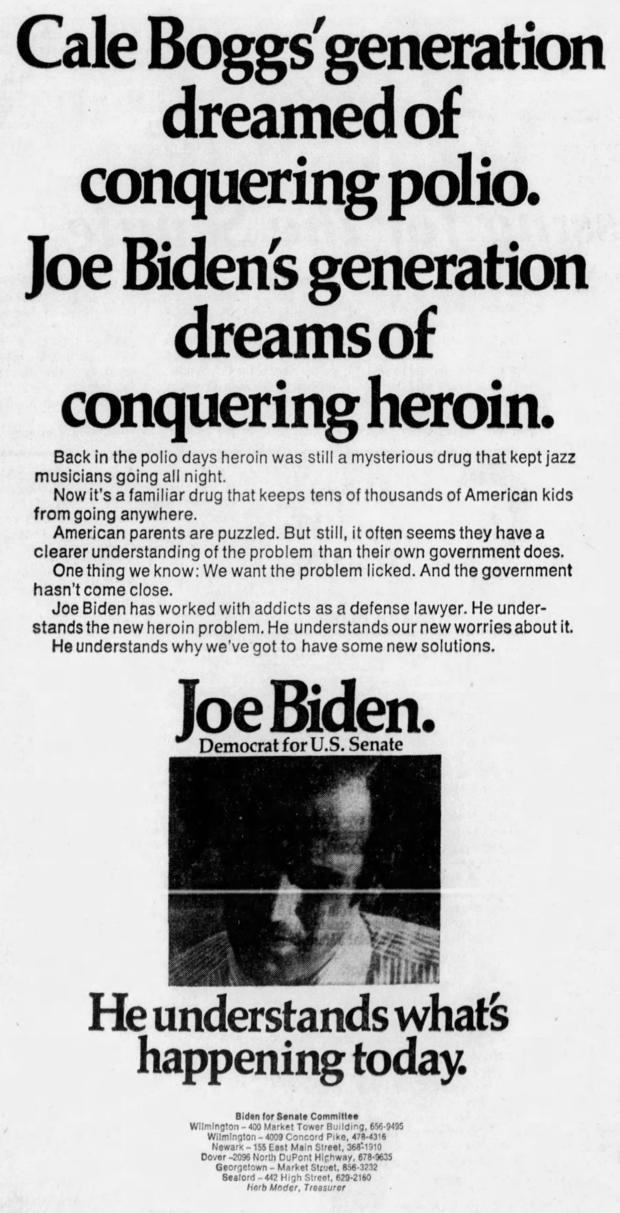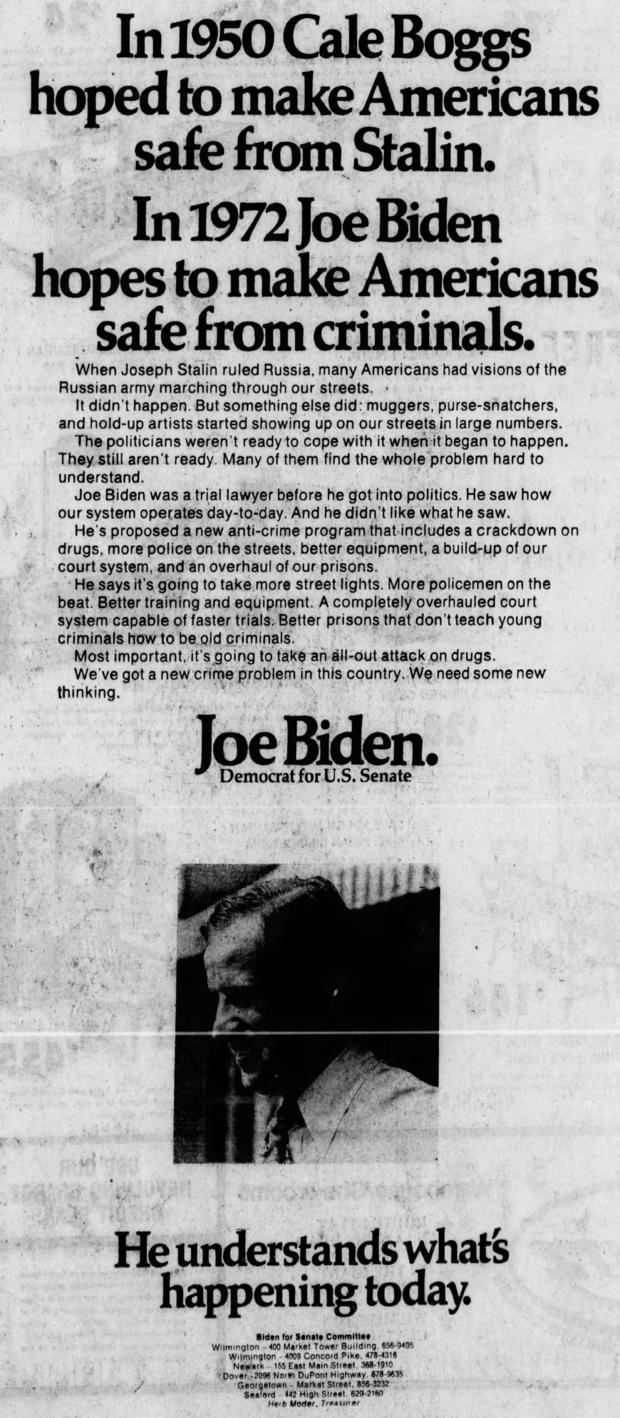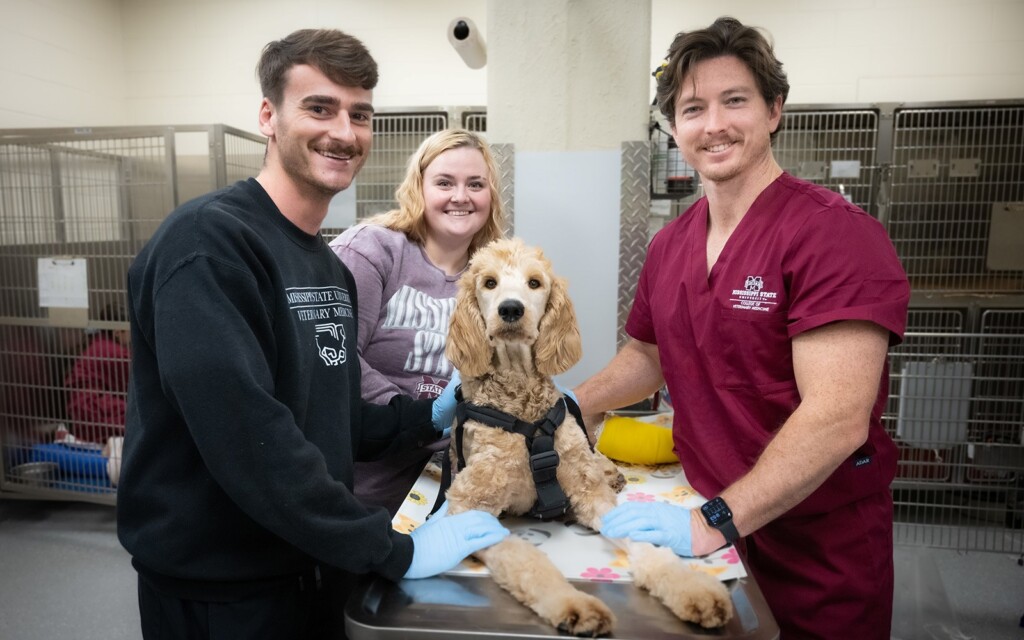When a young Joe Biden used his opponent’s age against him
At a candidate forum this weekend in San Francisco, Mayor Pete Buttigeig made one of frequent nods toward age: “I don’t have as much gray hair as you’d expect on somebody stepping up to run for president, but I’m here to make the case for a new generation of American leadership.” He didn’t mention his name, but the millennial mayor was undoubtedly hoping people would think about 76-year-old Joe Biden.
Buttigieg isn’t the only candidate taking veiled jabs at the septuagenarian Democratic frontrunner, which have not gone unnoticed by ardent Biden fans. At rallies, his supporters sometimes describe efforts to paint him as “too old” or “out of touch” as “ageist.”
But what’s old is new again. Decades before he kicked off his third bid for the presidency, Biden too ran on a platform of generational change.
In 1972, Biden — a 29-year-old, first-term city councilman in Delaware — challenged a popular, two-term senator who was described at the time as “unbeatable.”
Both intellectually and physically, Biden aimed to contrast himself with Republican Sen. Cale Boggs, who was more than 30 years his senior.
In order to accomplish this, Biden orchestrated a “sophisticated” media strategy that argued Boggs’ best governing days were behind him, according to former Delaware politics reporter Eleanor Shaw, who covered Biden’s first senate campaign.
“Cale Boggs’ generation dreamed of conquering polio. Joe Biden’s generation dreams of conquering heroin,” declared one almost full-page ad. “[Biden] understands what’s happening today.”
“In 1950 Cale Boggs hoped to make Americans safe from Stalin. In 1972 Joe Biden hopes to make Americans safe from criminals,” read another. “We’ve got a new crime problem in this country. We need some new thinking.”
Biden even tried to make taxes seem like a geriatric gamble.
“To Cale Boggs an unfair tax was the 1948 poll tax. To Joe Biden an unfair tax is the 1972 income tax,” said another ad. “It was no different for our fathers, but they never saw the unfairness of it all.”
This messaging strategy was “ordered by Biden himself,” Delaware political scribe Norm Lockman wrote days before the 1972 election, and “use[d] an approach that says, in effect, ‘Dear old dad may have been right for his time — and I love him — but things are different now.'”
Biden described himself as a “young liberal,” while painting a “gramp image” of Boggs, Lockman wrote in another editorial.
The ads were hailed as highly effective by Biden backers and bashed by Boggs. “I like him very much but I can’t say the same for some of his advertising,” Boggs said two weeks before the election.
But Biden, who repeatedly called Boggs a “helluva nice guy,” continued to covertly hint at his opponent’s supposed fragility. Biden told the press he noticed Boggs “has lost that twinkle in his eyes” because he “doesn’t really want to run again.” He also floated a rumor that Boggs would retire after two years if he were reelected.
Boggs was “just not a fighter,” Biden told the Associated Press.
Beyond differences of opinion, Biden’s campaign played on the physical differences between the 29-year-old challenger and the 62-year-old senator.
“If Sen. Boggs and I could just go down to the football stadium at the University of Delaware and people saw the two of us, they’d pick me,” Ted Kaufman, who worked on Biden’s campaign and would eventually succeed him in the Senate, later recalled Biden saying at the time. Biden had played on the University of Delaware’s football team.
Biden’s confidence was surely boosted by his good looks, which were regularly mentioned in his media coverage.
“For a young man, he is extremely handsome,” Wilmington News Journal writer Jane Harriman wrote in a flattering profile before his campaign kickoff. “His eyes sparkle blue, and his teeth shine when he smiles, his cheeks glow, and his body is still boyishly slim.”
“The girls think he’s sexy and say so with little provocation,” reporter Lockman noted, “The younger men get that ‘new hero’ look when Biden raps about how the old guard has bungled things.”
Simply put: Biden looked “like the photograph of a great statesmen in his youth,” the profile by Harriman surmised.
Conversely, the Associated Press described Boggs as a “moon-faced senator with thinning hair” who “gets tongue-tied and dry-throated in public.” Another political columnist said Boggs had “shoes older than Joe.”
The whole campaign was built on youth. Biden said he liked to buy his wife Neilia’s fashionable clothes — “even bikinis,” he told reporter Al Cartwright, “I know her size better than she does.” His campaign manager was also his baby sister, Valerie. (“She’s Got to Be Best-looking Campaign Manager,” read one headline.) Biden and his brothers were even compared to the Kennedy clan.
“I don’t know the Kennedys,” Neilia told the press, “but I don’t think they could be half as great as the Bidens.” Joe reveled in the Camelot comparison, adding that “the Kennedys never played football the way we play football.” Sen. Ted Kennedy, apparently unbothered by the ribbing, traveled down from Massachusetts to campaign for Biden.
Biden targeted his campaign at the young voters who, thanks to a constitutional amendment ratified the year before, were able to vote that year for the first time as 18-year-olds.
“We’ll be appealing to colleges students for help…but the main emphasis will be on the younger students, and younger laborers,” Biden said. That effort, guided by sister Valerie, at its height ballooned into a “Children’s Crusade” of 1,700 young volunteers who distributed as much as 200,000 pieces of Biden campaign fliers in a day.
The Bidens were aggressive campaigners. Neilia would attend Republican campaign stops, smiling and applauding as she discreetly tape recorded her husband’s opponents. The candidate himself even door knocked Bogg’s own home. “Biden the Unorthodox,” as he was once labeled, was also hailed a leader on a new and somewhat politically daring issue in Delaware: protecting the environment.
Republican Delaware Gov. Russell Peterson apparently thought this energetic, youth-focused strategy was laughable and called Biden a “young kid,” a moniker likely celebrated inside Biden’s headquarters.
But political observers widely acknowledged the campaign’s ability to energize new, young voters. And when Biden beat Boggs by roughly 3,000 votes on Election Day, the sports pages heralded the “old quarterback” heading to the senate.
“I’m in a unique position…the youngest senator down there,” Biden said in his victory speech. “I might be able to sit there for another 40 years if I’m a good boy and play my cards right.”
Biden came close, lasting 36 years in the chamber before ascending to the vice presidency in 2008. His first term in Washington was particularly difficult due to the tragic death of Neilia and his daughter Naomi, who were killed in a car crash just weeks after Election Day 1972.
Now Biden finds himself in the role of the older politician challenged by young up-and-comers eager to make their mark. And while he’s acknowledged that his age is a “legitimate issue,” he must now prove that it’s not a defining one.
“I think they’re gonna judge me on my vitality,” Biden told CBS News‘ Norah O’Donnell. “Can I still run up the steps of Air Force Two? Am I still in good shape? Am I – do I have all my faculties? Am I energetic?”







Leave a Reply